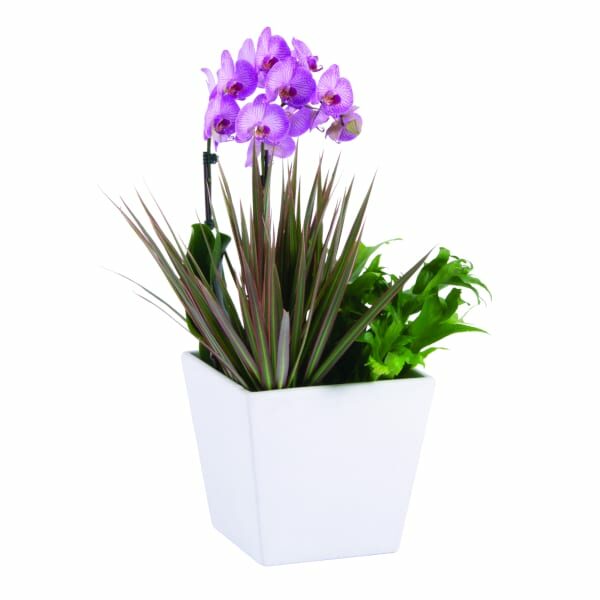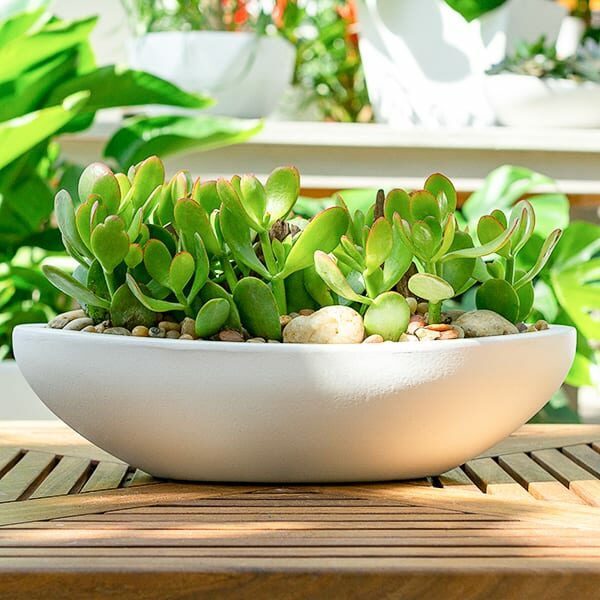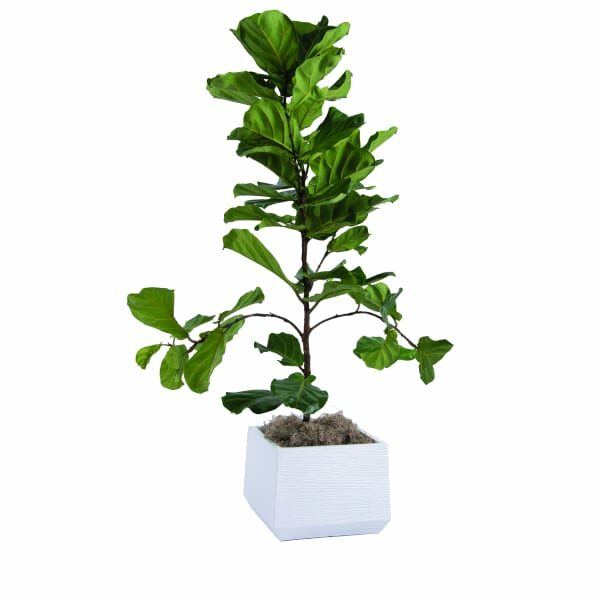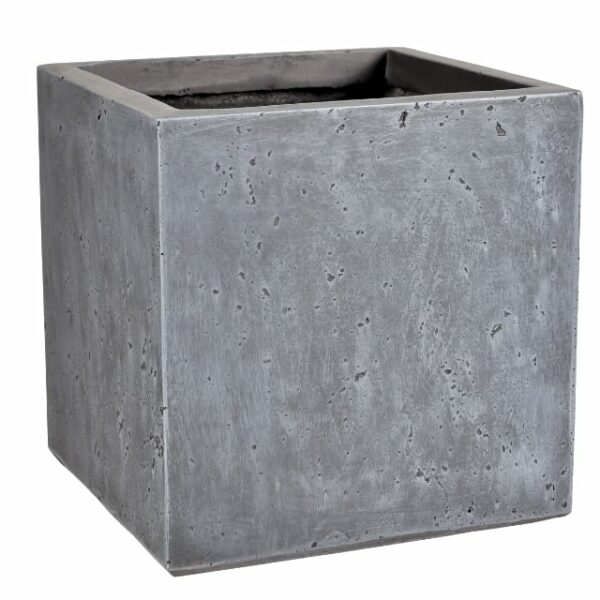Are you interested in becoming a plant parent? These five houseplants are great for beginners because they are hardy, easy to keep alive, and require minimal maintenance. They’re great for those who are busy or forgetful, or just want minimal upkeep for their indoor garden. These plants can withstand inconsistent watering, unfavorable lighting conditions, and even a bit of neglect.
This article will dive into 5 easy and low maintenance houseplants for beginners, their characteristics, and the general care they will need.
In This Article:
1. Spider Plant (Chlorophytum Comosum)

Spider plants, otherwise known as Chlorophytum Comosum, are perennial herb African plants of the Asparagaceae family. They are native to the African tropics and southern Africa.
Spider plants have long, grass-like green and white striped leaves. They typically grow to be between 12-24”.
Spider plants are easy to grow, require minimal maintenance, and flourish in many different conditions. They are great for beginners for these reasons. They are also very adaptable and can easily be moved to new environments. It’s a great plant for those who are unsure of where they might place a plant in their home.
Their general needs consist of bright, indirect light and moist soil. Be sure to only water once the soil is dry to avoid fungal growth and pests. One small, common issue seen with spider plants is brown tips on the leaves. This can be caused by a variety of errors such as overwatering, underwatering, fungal disease, or fertilizer burn. Keep in mind these common causes when caring for your own spider plant.
Spider plants do best in hanging planters, but also do well on a table or shelf in a bright room.
A fun fact about spider plants is they are known to grow “babies” which are called “plantlets”. They grow on plant runners, and that gives the plant its spidery look and ultimately its name. You can propagate these and grow your own spider plants from them! Check out the process here.
2. ZZ Plant (Zamioculcas Zamifolia)

ZZ plants, or Zamioculcas Zamifolia have sharp, pointy dark green leaves. Its leaves are waxy, smooth, and shiny. It’s a foliage plant, and rarely blooms. Mid-summer it tends to give off some small white flowers, though. This plant never grows more than three feet tall.
The ZZ plant is part of the Araceae family. It is originally native to Africa, where it thrives outdoors naturally in drought-stricken areas. It is hardy and tolerates neglect. It’s a great choice for those who are looking for a low-maintenance, self-sustainable plant. It is wildly tough and basically indestructible.
The ZZ plant generally needs to be in an area with low to bright indirect light. It is easily drought resistant and needs watering only once it is fully dry, about every two to three weeks or so. Any well-drained potting soil is fine for this plant. ZZ plants are quite resistant to pests and insects.
An interesting fact about the ZZ plant is that all parts of it are poisonous! Because of this, it is recommended that this plant be kept away from animals and small children. Also, if you do touch its leaves, it’s best to wash your hands immediately after to avoid irritation.
A great planter for this type of plant is our Premier Cylinder in Polar White. The contrast between the vibrant, dark green leaves and round, bright white plant container will create a gorgeous plant display in your home.
3. Money Tree (Pachira Aquatica)

The Money Tree is a tropical wetland tree that is part of the Malvaceae family. It has hand-shaped bright green leaves and an unusual, braided trunk. This plant is native to Central South America and is also quite popular in Taiwan and other East Asian countries.
The ideal light condition for a money tree is moderate, indirect light because direct sun will burn its leaves. It also does well in low-light environments. When it comes to humidity, the more the merrier! It loves a good steamy environment and would be a great addition to a bathroom because of it. Money trees need water when the top two or three inches of the soil are dry, and make sure that water runs all the way through the plant and out the bottom of the container. Make sure to dump the excess water out of the plant tray to avoid root rot.
Indoors, this plant can grow to about six feet tall. Interestingly, in its natural habitat of Central South America, Money Trees can grow to around sixty feet tall. That is ten times as tall as it will grow indoors!
A fun fact about the Money Tree’s odd, braided trunk is that it is not naturally braided. This is done to the plant when it is much younger and softer. You can find more information about how it’s done here. Money trees are also safe for pets!
4. Pothos (Epipremnum Aureum)

Pothos is a tropical vine plant native to southeastern Asia that doubles as a hardy indoor houseplant. It is part of the Araceae family.
This plant prefers bright, indirect light. Direct sunlight should be avoided, as that will dry out the plant. Pothos will tolerate low-light but will see stunted growth as a result. Devil’s Ivy is a great houseplant for beginners because it can thrive in unfavorable conditions and needs minimal upkeep.
Pothos needs water infrequently. In fact, you should let your Pothos dry out completely before watering them again. When you do water your Pothos, make sure the water goes all the way through and out the bottom of the plant container. Devil’s Ivy loves and needs humidity, so this plant is another great candidate for a bathroom houseplant.
This plant can easily become root bound, so be sure to transfer it to a larger pot with good nutrition once it starts growing a lot.
One interesting fact about Pothos is that there is over a dozen different varieties of Pothos, each with a gorgeous, unique look! Here are nine different types of Pothos.
5. Ponytail Palm (Beaucarnea Recurvata)

A Ponytail Palm consists of a rounded stump which tapers up into a narrower stem. At the top of the narrower stem, you’ll notice leathery leaves that are green in color and grow to be quite long. They are part of the Asparagaceae family and native to southeastern Mexico, Belize and Guatemala.
Ponytail Palms thrive in very dry soil and do not like being overwatered at all. Only water this plant once its soil becomes completely dry. This plant needs little maintenance, and pretty much anyone can successfully keep it in their home. Ponytail Palms are great for beginners who struggle with remembering to water their plants and those with “brown” thumbs who just can’t seem to keep houseplants alive.
This houseplant likes bright light but will still thrive if it is in low-light half of the time too. When it comes to feeding your plant, keep in mind that Ponytail Palms are sensitive to over-fertilizing. The best thing to do is only fertilize it once or twice a year, during the summer when it is growing the most.
While indoors, the leaves of a Ponytail Palm can grow up to 3 feet long. While outdoors, they may grow twice as large! Something that may come as a surprise is that Ponytail Palms are neither palms nor trees, but rather a succulent from the Agave family.
A fun fact about Ponytail Palms is that they get their names from their long, hair like leaves that grow off the top of its trunk resembling a ponytail!
Final Thoughts
We hope this article brought you clarity on which houseplants are best for beginners. All the plants listed here are simple, hardy, and gorgeous. Each will bring something unique into your space and nature back indoors. We wish you the best of luck on your houseplant journey!
When you decide on a houseplant, make sure to come back and purchase a planter from Pottery Designs. We offer a large variety of plant containers for all your indoor and outdoor planting needs. They are reliable, visually pleasing and properly functional. Check them out at the link below!






